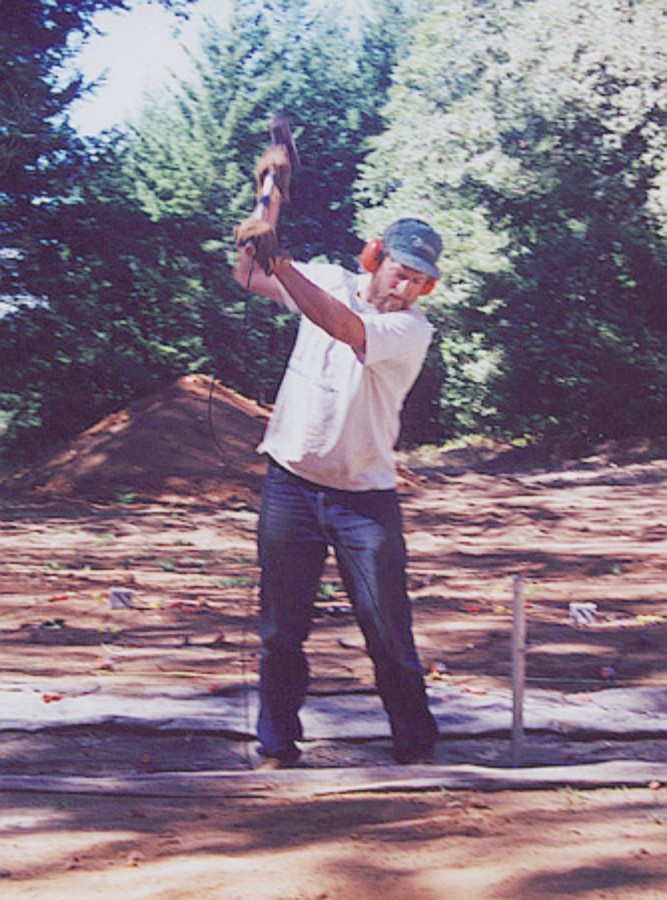
| Electroseismic Research |  |
My current dissertation research focuses on developing the electroseismic method as a tool for environmental studies and other shallow applications. I am conducting controlled field experiments (these could be called field-scale lab experiments, though that might be a stretch) in order to improve data acquisition techniques, and am using the resulting data in the development of data processing routines. My goal is to determine a reliable protocol that can be followed under a variety of circumstances to collect, process, and interpret electroseismic data, providing subsurface information beyond what is possible with commonly used geophysical techniques.
What is the electroseismic method?
What's so great about the electroseismic method?
Experimentation
I am carrying out experiments
at a site located at Pride Mountain
Vinyards in St. Helena, CA. (Many thanks to Jim and Carolyn Pride
for the use of their land, tractors, backhoe, etc). At this site,
I have constructed a wet sand-filled trench 2 m deep, 18 m long, and about
65 cm wide in an otherwise roughly homogeneous material (clay-rich soil).
With the seismic source (10 lb sledge, until I upgrade to something better...)
on one side of the trench and the electrode dipole receivers on the other
side, I "image" the trench from the side. The key to this experiment
is the horizontal interface, because the described acquisition geometry
lets me record the interface response from the ditch prior to the arrival
of the coseismic field. Because I know exactly what I'm trying to
image (the joys of building your own geology), I am able to better interpret
the data.
The electroseismic response is rather weak compared
with background noise, so it is necessary to use a high number of stacks
of hammer blows at each shot point. Generally I use 50 or 100 hammer
strikes per shot. This has led to a large amount of hammer swinging
since August, 2001. My arms would have long since fallen off
if it weren't for the help of many suckers who I lured into the task with
promises of free food and beer. (One of the advantages of being
surrounded by graduate students...) Check out The
Hammer Swinger's Page of Fame.
Links (updated Feb 2007)